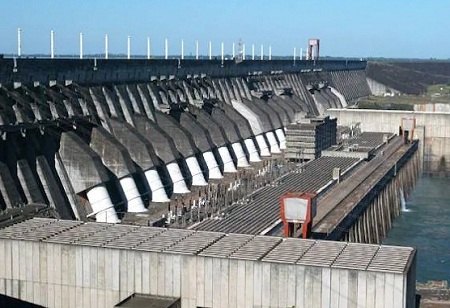Arunachal Pradesh has unveiled an ambitious proposal to construct 50 small hydropower projects along the Chinese border in order to electrify distant villages that are currently suffering difficulties due to inadequate connectivity and steep terrain. These 50 micro, mini, and tiny hydropower plants, with a capacity ranging from 10 to 100 Kilowatts (KW), are being constructed as part of the "Golden Jubilee Border Village Illumination Programme" at an estimated cost of Rs 200 crore.
"The 50 projects are being implemented in a phased manner, and under Phase-I, 17 projects with an installed capacity of 1255 KW and at an estimated cost of Rs 50 crore, have been taken up," Chief Minister Pema Khandu told PTI during a visit here. These independent initiatives incorporate localised transmission and distribution elements to make it easier to provide basic services to border villages all at once. The chief minister, both the civilian population and the border guarding personnel stationed in the area face severe challenges due to the inability to
provide grid connectivity to these remote places. The military rely on expensive diesel generators to provide electricity. In the mountainous border regions of the state, abundant rainfall and the abundance of rivers and natural springs provide a significant advantage for the production of energy from micro-hydel projects, according to Khandu.
The deputy chief minister Chowna Mein, 10,185 individuals in 123 border communities will benefit from these 17 projects scattered over 11 districts. Mein, who also oversees the Power Department of Arunachal Pradesh, added that 15 installations of the Indian Army, Indo Tibetan Border Police, and Border Roads Organization, employing over 1,800 people, will also be electrified under these 17 projects.
Nine of these projects, with a combined capacity of 725 KW, were launched by Union Home Minister Amit Shah on a visit to the Anjaw area on Monday. Dichu Nallah (100 KW), one of these projects, is situated close to the Line of Actual Control (LAC), close to Kibithoo in the Anjaw district. Because to its vicinity to the LAC, it had to deal with the People's Liberation Army (PLA) of China's intense scrutiny. "However, despite a number of obstacles, we were able to finish the project quickly and successfully. As it is a civilian asset, we have also altered the project's colouring from bottle green to red, according to executive engineer Dharmendra Gogoi. The majority of the Army utilities in the region are green, while everything painted red is a civilian asset.
With a total length of 1,863 km, Arunachal Pradesh has the longest international border in the nation. The state and Tibet share 1,126 kilometres of the complete international border. Such projects, according to the deputy chief minister, are both economically and environmentally sustainable. "Arunachal has installed numerous projects of this nature during the past few years. In fact, by using these micro-hydels to produce electricity last year, the state was able to earn almost four lakhs of carbon credits, according to the deputy chief minister.
